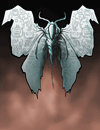The Tomb-Colonies: Difference between revisions
No edit summary |
|||
| Line 4: | Line 4: | ||
''A cheerless nook in a far corner of the Neath. Known chiefly for its flowstone, its masks and its depraved bats.'' | ''A cheerless nook in a far corner of the Neath. Known chiefly for its flowstone, its masks and its depraved bats.'' | ||
'''The Tomb-Colonies''': home to outcasts, the generally disgraced, and of course, zombies. (Well, Fallen Londoners call them tomb-colonists, but still... they're undead.) These dreary encampments lie north of [[:Category:London|London]].__forcetoc__ | '''The Tomb-Colonies''': home to outcasts, the generally disgraced, and of course, zombies. (Well, Fallen Londoners call them '''tomb-colonists''', but still... they're undead.) These dreary encampments lie north of [[:Category:London|London]].__forcetoc__ | ||
==A Maelstrom of Scandal!== | ==A Maelstrom of Scandal!== | ||
Londoners who are just too scandalous (or unappealing) for polite society are often forced to reside here until their names are cleared. Life in the tomb-colonies can be depressing, especially when a sudden movement results in a loss of a limb or two. Because of this, it's no surprise that many tomb-colonists choose to visit or reside in London proper, often seeking excitement or a reminder of their old lives. The tomb-colonies have existed since before the fall of London, and visitors may encounter tomb-colonists who lived during the time of the Fourth City, or even a time before its fall. The colonies are also dotted with relics and iconography from cities past. Certain factions own private tomb-colonies of their own, such as the [[the God-Eaters]]. | |||
'''Venderbight '''is the largest tomb-colony, and it is the only port open to those who wish to travel to the Tomb-Colonies by zee. There are some amenities for visitors, given that it's the area's only port, but these are... rather meager. But of course, | '''Venderbight '''is the largest tomb-colony, and it is the only port open to those who wish to travel to the Tomb-Colonies by zee. There are some amenities for visitors, given that it's the area's only port, but these are... rather meager. But of course, since most of the residents are undead, amenities are not usually necessary. Tomb-colonists are willing to pay handsomely for transportation here; colonists are often stowed in coffins. | ||
'''The Grand Sanatorium''', the largest building in Venderbight, is where some tomb-colonists go to waste away into nothing. They consider this more dignified than the alternatives, such as being eaten by moths or dying in combat, but of course everyone's choice of death is different. | '''The Grand Sanatorium''', the largest building in Venderbight, is where some tomb-colonists go to waste away into nothing. They consider this more dignified than the alternatives, such as being eaten by moths or dying in combat, but of course everyone's choice of death is different. | ||
A tomb-colony by the name of '''Xibalba''' is known to exist, which where the God-Eaters conduct their business. There are also many other minor tomb-colonies, but they're unnamed as of now. | |||
==The Tomb-Colonists== | ==The Tomb-Colonists== | ||
| Line 21: | Line 21: | ||
The First Curator}}''Tomb-colonists: technically, passengers rather than goods. But you'd never know it to talk to them.'' | The First Curator}}''Tomb-colonists: technically, passengers rather than goods. But you'd never know it to talk to them.'' | ||
'''The tomb-colonists''' are quite notorious for their | '''The tomb-colonists''' are quite notorious for their unparalleled experience in many activities, such as dueling, chess, and even sex. This makes them extremely dangerous if provoked. The tomb-colonist dueling style favors well-practiced and precise forms over the unrefined assaults of the typical riffraff. | ||
Generally speaking, a person becomes a tomb-colonist by being thoroughly, thoroughly wounded; it's no wonder that many tomb-colonists are duelists or other daring individuals. Other tomb-colonists are simply people who became very, very, old. Being exiled due to age or injury is basically permanent, and people may become tomb-colonists (or have the fate inflicted on them) to escape their past lives for good. Despite their horrific appearances, tomb-colonists are basically normal people if you ignore the mold and decay, so they can be perfectly respectable individuals if they're treated as such. | |||
===Emergence=== | |||
''"...tomb-colonists do not exactly die. Many end in the Grand Sanatorium, withering slowly to insensate horror. (This is not publicised.) A few end in Emergence: transformation to a flimsy thing of wings and knowledge, an end in ecstacy, the delight of becoming an egg, of sorts. This is accounted a grand and vile and tempting sin..."'' | |||
[[File:Keepermoth.png|thumb|left|A frost-moth.]] | [[File:Keepermoth.png|thumb|left|A frost-moth.]] | ||
Tomb- | Tomb-colonists who severely overstay their welcome may spawn '''frost-moths'''. Apparently, these creatures use tomb-colonists as a sort of cocoon, and burst out of them when the time is right. Tomb-colonists have mixed feelings about these things; some see their birth as a ritual of sorts, called '''Emergence''', while others consider them filthy. | ||
The source of some of London's candles? Tomb-colonist fat. These candles are called '''mourning candles''', and they give off a "smudgy, dolorous light". | The source of some of London's candles? Tomb-colonist fat. These candles are called '''mourning candles''', and they give off a "smudgy, dolorous light". | ||
| Line 37: | Line 42: | ||
===The First Curator=== | ===The First Curator=== | ||
''A bandaged shape no larger than a child lies crumpled on a couch. It lifts its head with obvious effort. It takes several seconds for you to distinguish its voice from the soft buzz of the bees.'' | ''A bandaged shape no larger than a child lies crumpled on a couch. It lifts its head with obvious effort. It takes several seconds for you to distinguish its voice from the soft buzz of the bees.'' | ||
[[File:Black.png|thumb|The First Curator | [[File:Black.png|thumb|The First Curator]] | ||
'''The First Curator''' is responsible for the preservation of all the tomb-colonies. Residing in Venderbight, | '''The First Curator''' is responsible for the preservation of all the tomb-colonies. Residing in Venderbight, this individual of mysterious and indistinct gender apparently dates back the [[The Fallen Cities|the Third City]]. As a result, it (yes, ''it'') is by far the most decayed of the tomb-colonists; it can barely even move or speak. The Curator lies in total darkness, it seems fearful of light and moths, and it wants to see [[the Neathbow]] before it finally expires. It'll pay handsomely in return. | ||
[[Category:Places]] | [[Category:Places]] | ||
[[Category:Other Places]] | [[Category:Other Places]] | ||
Revision as of 02:08, 16 June 2019
Few die in Fallen London. They come here instead.
A cheerless nook in a far corner of the Neath. Known chiefly for its flowstone, its masks and its depraved bats.
The Tomb-Colonies: home to outcasts, the generally disgraced, and of course, zombies. (Well, Fallen Londoners call them tomb-colonists, but still... they're undead.) These dreary encampments lie north of London.
A Maelstrom of Scandal!
Londoners who are just too scandalous (or unappealing) for polite society are often forced to reside here until their names are cleared. Life in the tomb-colonies can be depressing, especially when a sudden movement results in a loss of a limb or two. Because of this, it's no surprise that many tomb-colonists choose to visit or reside in London proper, often seeking excitement or a reminder of their old lives. The tomb-colonies have existed since before the fall of London, and visitors may encounter tomb-colonists who lived during the time of the Fourth City, or even a time before its fall. The colonies are also dotted with relics and iconography from cities past. Certain factions own private tomb-colonies of their own, such as the the God-Eaters.
Venderbight is the largest tomb-colony, and it is the only port open to those who wish to travel to the Tomb-Colonies by zee. There are some amenities for visitors, given that it's the area's only port, but these are... rather meager. But of course, since most of the residents are undead, amenities are not usually necessary. Tomb-colonists are willing to pay handsomely for transportation here; colonists are often stowed in coffins.
The Grand Sanatorium, the largest building in Venderbight, is where some tomb-colonists go to waste away into nothing. They consider this more dignified than the alternatives, such as being eaten by moths or dying in combat, but of course everyone's choice of death is different.
A tomb-colony by the name of Xibalba is known to exist, which where the God-Eaters conduct their business. There are also many other minor tomb-colonies, but they're unnamed as of now.
The Tomb-Colonists
Tomb-colonists: technically, passengers rather than goods. But you'd never know it to talk to them.
The tomb-colonists are quite notorious for their unparalleled experience in many activities, such as dueling, chess, and even sex. This makes them extremely dangerous if provoked. The tomb-colonist dueling style favors well-practiced and precise forms over the unrefined assaults of the typical riffraff.
Generally speaking, a person becomes a tomb-colonist by being thoroughly, thoroughly wounded; it's no wonder that many tomb-colonists are duelists or other daring individuals. Other tomb-colonists are simply people who became very, very, old. Being exiled due to age or injury is basically permanent, and people may become tomb-colonists (or have the fate inflicted on them) to escape their past lives for good. Despite their horrific appearances, tomb-colonists are basically normal people if you ignore the mold and decay, so they can be perfectly respectable individuals if they're treated as such.
Emergence
"...tomb-colonists do not exactly die. Many end in the Grand Sanatorium, withering slowly to insensate horror. (This is not publicised.) A few end in Emergence: transformation to a flimsy thing of wings and knowledge, an end in ecstacy, the delight of becoming an egg, of sorts. This is accounted a grand and vile and tempting sin..."

Tomb-colonists who severely overstay their welcome may spawn frost-moths. Apparently, these creatures use tomb-colonists as a sort of cocoon, and burst out of them when the time is right. Tomb-colonists have mixed feelings about these things; some see their birth as a ritual of sorts, called Emergence, while others consider them filthy.
The source of some of London's candles? Tomb-colonist fat. These candles are called mourning candles, and they give off a "smudgy, dolorous light".
Notable Tomb-Colonists
Feducci is the self-styled Prince of the Tomb-Colonies. He's usually seen covered in bandages and runs an underground dueling society. However, there may be more to him than meets the eye...
The Once-Dashing Smuggler
An acquaintance has told you of a Once-Dashing Smuggler who's in need of help. Your friend is willing to make an introduction.

The Once-Dashing Smuggler is a mysterious and gallant tomb-colonist who may be looking for a new romance. He's highly competent at his job, and a good cook as well, though he may be a little too trusting. The Smuggler is often seen in a purple suit, and he's fond of Myrrh-Scented Roses. It turns out he's from the Fourth City, and he may have had a relationship with the Gracious Widow.
The First Curator
A bandaged shape no larger than a child lies crumpled on a couch. It lifts its head with obvious effort. It takes several seconds for you to distinguish its voice from the soft buzz of the bees.

The First Curator is responsible for the preservation of all the tomb-colonies. Residing in Venderbight, this individual of mysterious and indistinct gender apparently dates back the the Third City. As a result, it (yes, it) is by far the most decayed of the tomb-colonists; it can barely even move or speak. The Curator lies in total darkness, it seems fearful of light and moths, and it wants to see the Neathbow before it finally expires. It'll pay handsomely in return.